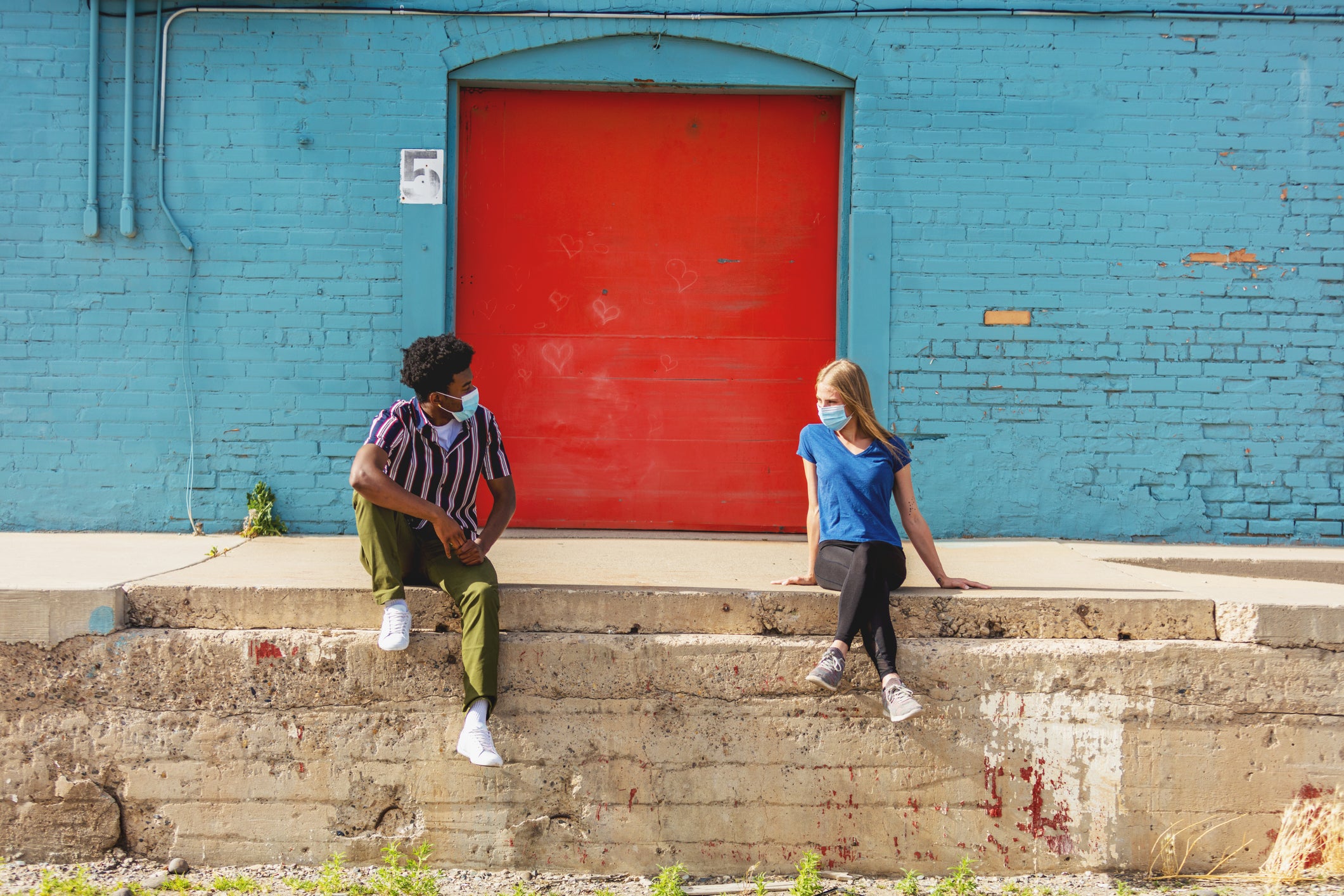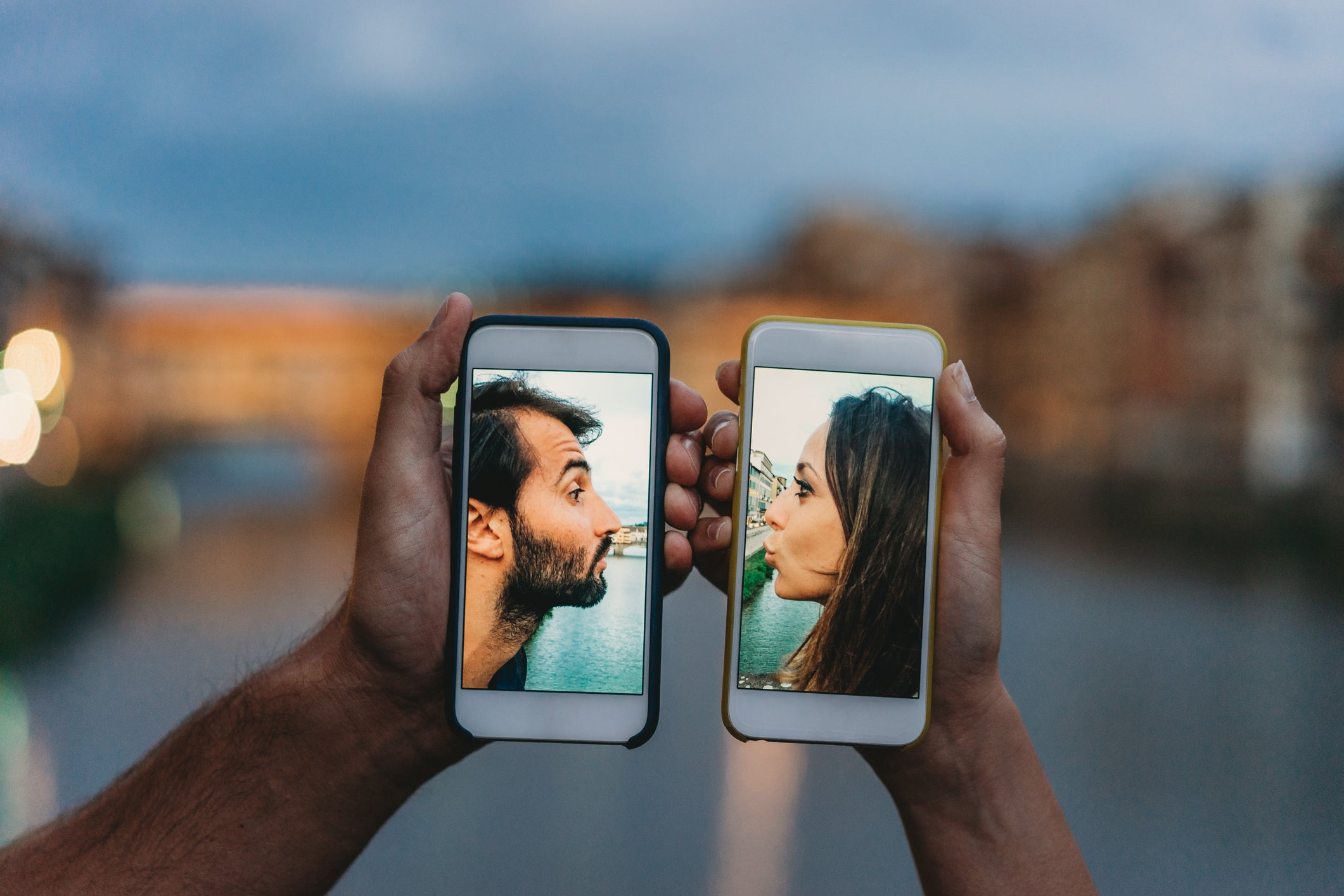How the world of dating apps has changed during the pandemic, according to Tinder
As IRL dating was off the cards for much for the last 12 months, Olivia Petter looks at data from Tinder to understand how the world of dating changed


Last year was not exactly the best time to be single. With the countless restrictions imposed by the pandemic, socialising with friends and family was confusing enough. Let alone dating.
Initially, when the UK went into lockdown, real-life dating was completely off the table. Cue a surge in virtual cocktail tastings and Zoom dinner dates.
However, when things started opening up again as we moved closer to summer, social distancing dates became the norm, which is easier said than done given that much of dating can be predicated on physical closeness and intimacy.
The government confused matters further with its ambiguous rules regarding sex, which was, at one point, illegal except for couples who were in “established relationships”, whatever that meant.
Now, as restrictions slowly ease across England as part of the government’s roadmap, we’ll soon start to see the long-term implications of these changes.
Read more:
- The groundhog year: This is what 12 months of monotony has done to your brain
- ‘I unwittingly helped criminals drain my bank account in Royal Mail scam’
- Peter Andre describes ‘sad reality’ of Jon Snow having a baby at 73
- Princess Eugenie got into trouble with royals for sharing behind-the-scenes palace photo
According to early analysis Tinder, which has just released its Future of Dating report - the findings are based on analysis of its users and a survey of more than 5,000 Tinder users - none of the restrictions of last year have put people off dating. In fact, they made the app more popular than ever before, with it reporting its busiest year in history since its 2012 launch.
On the busiest day, which was on 29 March 2020, Tinder reported three billion swipes among its users.
Not only were there more users, though, the users spent far more time on Tinder than ever before, with 19 per cent more messages sent in February 2021 compared to February 2020, while conversations were 32 per cent longer during the pandemic.
Tinder members were also more active on the app, with Gen Z (18-25) users updating their bios nearly three times as often as they did before, while millennial users did so twice as often.
One of the biggest changes that the pandemic will cause within the dating world will come as a direct result from a year of touch deprivation.
In its report, the app found that, due to the social distancing measures, its users were increasingly using their bios to state their desire for physical affection, with the phrase “cuddle” growing by 23 per cent, while “hand holding” went up by 22 per cent.
Additionally, due to the uncertainty that has characterised the last year, single people on Tinder were keen not to put any degree of certainty on their intentions, with phrases like “see where things go” rising by 19 per cent on their bios, along with “open to”, which rose by 17 per cent.

The app has also noticed a shift towards authenticity and honesty about mental health and wellbeing, with the word “anxiety” growing in usage on people’s bios by 31 per cent, while almost half (48 per cent) of Gen Z users said they were looking for someone they could truly be themselves with.
One surprising finding in the report is that digital dating might be here to stay, even once restrictions lift. During the pandemic, half of Tinder’s Gen Z members said they video chatted with matches, enjoying activities like playing Animal Crossing together, eating takeaway meals and watching films.
Now, according to the survey, 40 per cent of this demographic say they want to continue going on digital dates when pubs and restaurants reopen.
The app predicts that this could become a common way to test the chemistry from the comfort of your own home before committing to a real-life date with someone.
“It might save you a lot of time and energy on dead-end first dates going forward,” dating expert Madeleine Mason Roantree previously told The Independent. “You can still have your favourite tipple with you, and you can keep it short and sweet should you feel that it’s not going anywhere.”
Tinder’s data also reflects a move towards being very open about one another’s boundaries, with the word itself being used in people’s bios more than ever (up by 19 per cent).
“This past year, as social distancing became the new normal, it was a tough time to be single,” states Tinder in its report.
“Many places young people used to go to connect with others were closed, but their need for human connection was more urgent than ever.
“During the pandemic, Tinder emerged as one of the few places young people could go for much needed human interaction.” The app cited that 60 per cent of its members came to Tinder simply because they felt lonely and wanted to connect with people. While 40 per cent of Gen Z users specifically came to Tinder to meetnew people “to get them out of their echo chamber”.
As for whether all of this will actually transpire when restrictions do lift, well, only time will tell.
Join our commenting forum
Join thought-provoking conversations, follow other Independent readers and see their replies
Comments